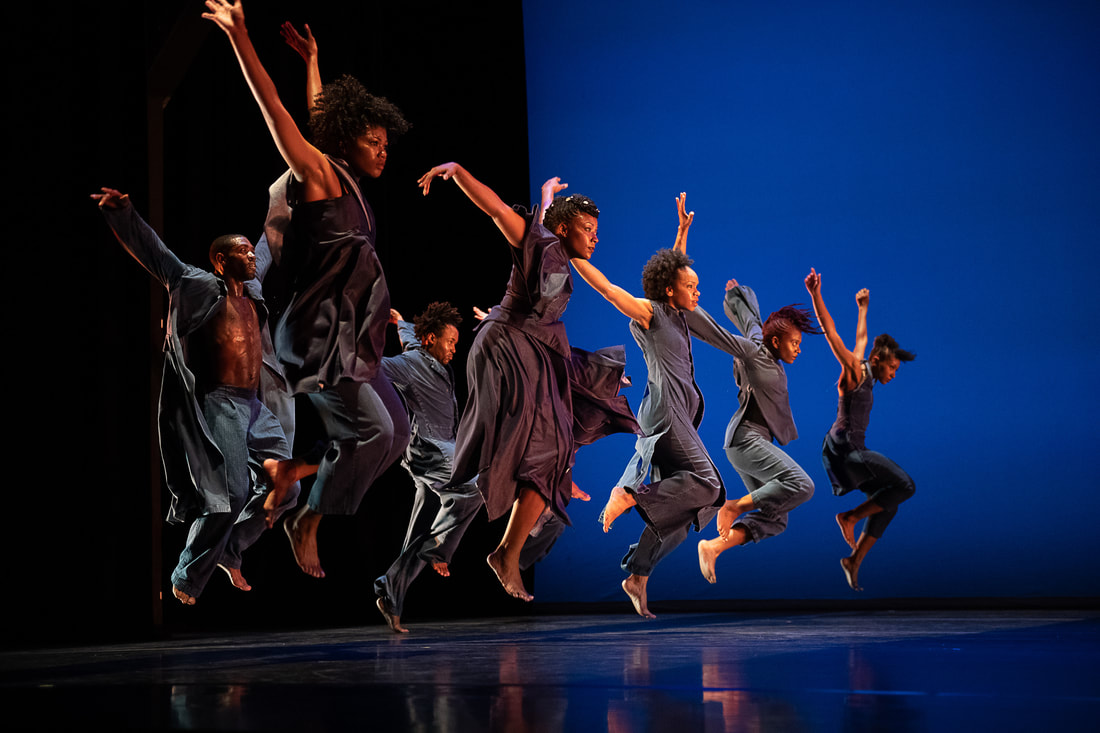|
Ronald K. Brown/EVIDENCE in "Come Ye" It’s a curious thing about Ronald K. Brown/EVIDENCE. The company has toured the world to acclaim and its founder and Artistic Director Ronald K. Brown has been commissioned by some of the nation’s most prestigious dance companies.
But I don’t get it. Seeing the company again on Thursday night at Jacob’s Pillow in its latest work – “New Conversations” – I come away feeling that all of Brown’s dances look the same, and worst, don’t go anywhere. The new work featured commissioned music by Latin jazz bandleader, composer and pianist Arturo O’Farrill. His band Resist played the piece live; and that was the evening’s highlight because the dances, which also include “Come Ye” and an excerpt from “Dancing Spirit,” are, frankly, monotonous. It’s heartbreaking to write this because I think Brown is a special person with a divine attachment to his heritage, his dancers and the music he choses. His dancers are exceptional – specialists in modern tinged African dance. What draws people into Brown’s work, however, is his selection of music: Nina Simone and Fela Anikulapo Kuti in “Come Ye,” Radiohead and War in “Dancing Spirit” and O’Farrill in the evening’s premiere. Brown has great taste in music, but his choreography rarely transcends it. The dancers are simply dancing to it. That would be fine if there was a solid wow factor there. But mostly, watching an EVIDENCE show is like going to a club and watching a hoard of people on the dance floor, bopping to the same beat. They hardly reveal something about themselves; nor do they elicit the emotion or the tension that make theater dance compelling. The other interesting thing about Brown’s choreographer is the dancers perform around each other – there is not touching, therefore no connection to each other. They may look and point to each other, but they don’t commune. In that way, communing with the audience is more difficult too. Of his dancers, Shayla Caldwell, Annique Roberts and Keon Thoulouis were favored. I would have like to seen more of the others who acted as adornments to the trio's solos because all of them were excellent. Roberts did an outstanding job as the figure in “Dancing Spirit,” conjuring Judith Jamison, the iconic dancer with Alvin Ailey American Dance Theater. She is both smooth and sharp, but I wish Brown gave her more to do. In “Come Ye,” the images of 1960s Civil Rights protests added a layer that deepened the work. But I didn’t need to see the dancers to know what they were doing. Brown doesn’t need to satisfy anyone’s criticism of his choreography because he is a luminary in the dance world. But I do wish he would push a little harder to create something more than dancing-in-the-living-room moments. He has the dancers to do it; and the heart and soul. He just has to be willing to take a chance.
0 Comments
Leave a Reply. |
Wendy
|

 RSS Feed
RSS Feed
